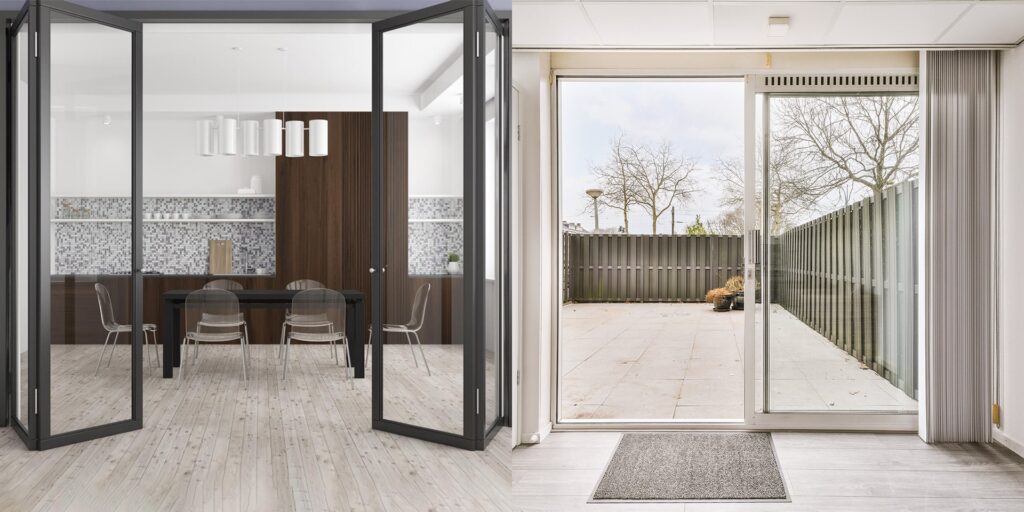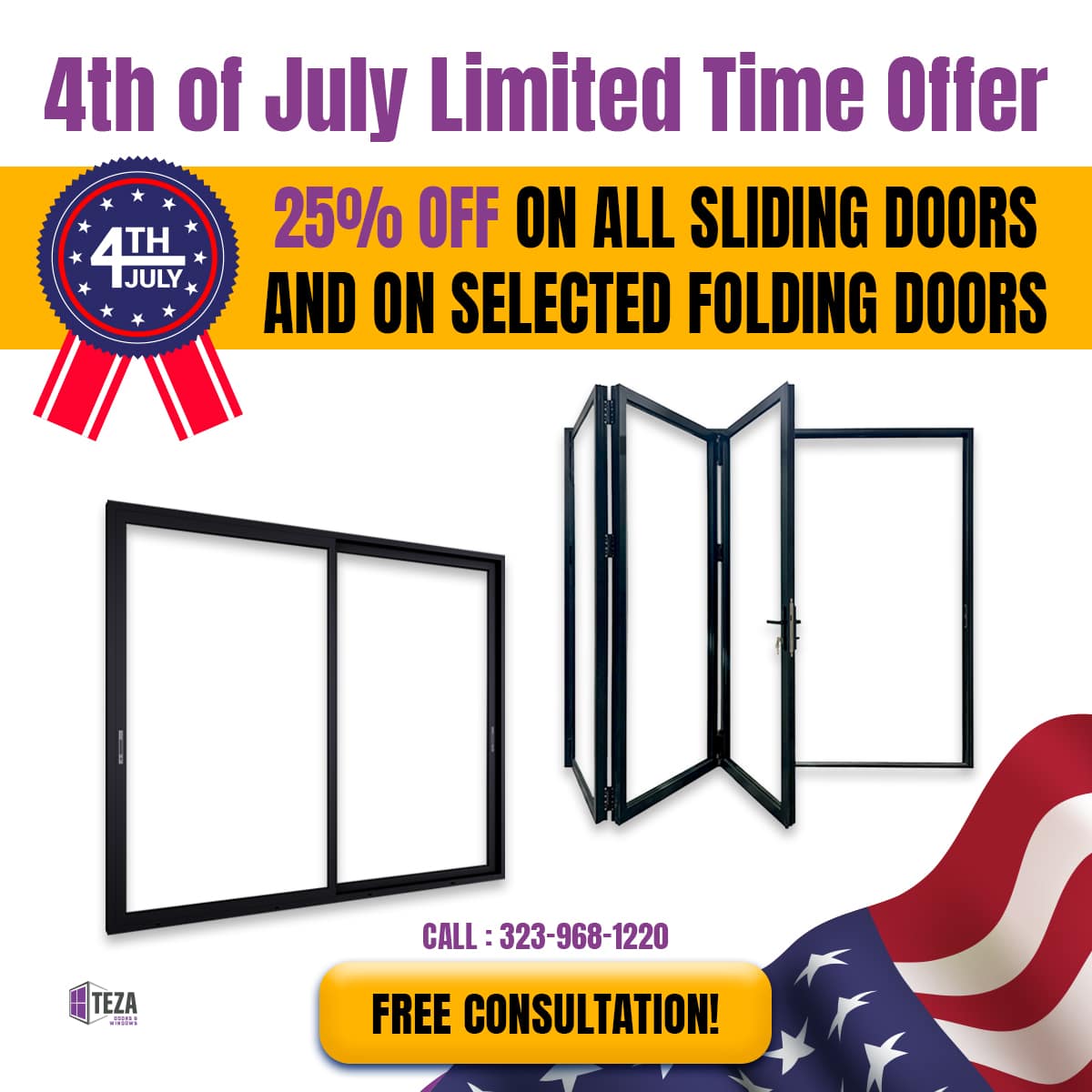When selecting doors for your home or commercial space, bi-fold doors and sliding doors are two of the most popular options. Each one offers unique benefits in terms of functionality, aesthetics, and space optimization. But which one is the best choice for your needs? Let’s break down the advantages and differences between bi-fold doors vs sliding doors.
Understanding Bi-Fold Doors and Sliding Doors
Before we talk about the differences between bi-fold doors vs sliding doors, let’s get to know them a bit:
What Are Bi-Fold Doors?
Bi-fold doors have multiple panels that fold and slide along a track. These panels stack neatly on one or both sides. These types of doors create a wide, unobstructed opening and seamlessly connect indoor and outdoor spaces.
What Are Sliding Doors?
Sliding doors feature large glass panels that move horizontally along a track. They typically consist of two or more sections, with one panel fixed while the other slides open.
Key Differences Between Bi-Fold and Sliding Doors
Here are the differences between bi-fold doors vs sliding doors in Los Angeles, CA:
| Feature | Bi-Fold Doors | Sliding Doors |
| Opening Width | Fully opens for a seamless transition | Limited opening space, usually half of the total width |
| Space Efficiency | Requires stacking space when folded | Ideal for compact areas as panels don’t protrude |
| Aesthetic Appeal | Modern and elegant with a dynamic look | Sleek, contemporary, and minimalistic design |
| Ventilation | Allows for full airflow | Provides partial ventilation |
| Ease of Use | Can be heavier to operate due to multiple panels | Smooth operation with a simple sliding mechanism |
| Maintenance | Requires regular cleaning of multiple hinges and tracks | Easier to maintain with fewer moving parts |
Pros and Cons of Bi-Fold Doors
Pros:
These doors:
- Provide a wide, open space, perfect for indoor-outdoor living.
- Maximize natural light and ventilation.
- Add a modern and stylish touch and architectural interest.
- Are customizable with different panel configurations.
Cons:
- Require folding space when opened.
- Can be more expensive than sliding doors.
- Have higher maintenance requirements because of their more moving parts.
Pros and Cons of Sliding Doors
Pros:
These doors:
- Save space as panels slide instead of folding.
- Are easier to operate with a smooth gliding mechanism.
- Have minimalist designs that fit various architectural styles.
- Require less maintenance than bi-fold doors.
Cons:
- Provide limited opening width, restricting airflow and access.
- Fixed panels mean you can’t fully open the space.
- May not offer the same aesthetic impact as bi-fold doors.
Which Door Type is Best for You?
Now that you know the differences between bi-fold doors vs sliding doors, it’s time to choose:
- For large, open spaces and maximum light, choose bi-fold doors.
- For small spaces and easy operation, choose sliding doors.
- For a seamless indoor-outdoor connection, bi-fold doors are ideal.
- For a sleek, minimalist look, sliding doors are a great choice.
Premium Doors from Teza Doors in Los Angeles, CA
Teza Doors offers high-quality bi-fold and sliding doors that offer durability, aesthetics, and energy efficiency. So, if you need a modern bi-fold system or a sleek sliding door, Teza Doors provides top-tier solutions to enhance your home or commercial space.
Call us at (818) 818 6001, get a FREE consultation, and find the perfect bi-fold or sliding door for your home at Teza Doors and elevate your space with style and functionality!
Bi-Fold Doors vs Sliding Doors: Final Thoughts
Both bi-fold and sliding doors offer unique benefits, and the right choice between bi-fold doors vs sliding doors depends on your space, design preference, and functionality needs. If you want a fully open space with a dramatic effect, bi-fold doors are your best bet. If you prefer a space-saving, modern look, sliding doors are an excellent option.


